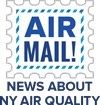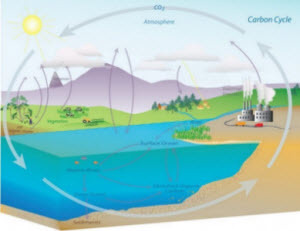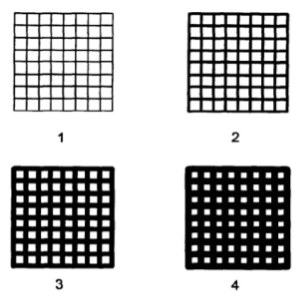Air Toxics, Carbon Dioxide and Reading Smoke - Air Mail!
The New York State Department of Environmental Conservation sent this bulletin on 07/24/2020 10:42 AM EDT |
| DEC Delivers - Information to keep you connected and informed from the NYS Department of Environmental Conservation |
| Share or view as a web page || Update preferences or unsubscribe |
This Month's Topics: |
Public & Stakeholder Participation Information:
Additional information and access to past announcements are on our Public & Stakeholder Participation Information page. Air Mail! is the publication to announce public and stakeholder information about air quality topics. All NYS residents are environmental stakeholders – we welcome anyone to join the information sessions and other opportunities posted here. What’s New with CO2We all know that clean air is essential, but how much do you really know about the air you breathe? Our air is made up of 21% oxygen, 78% nitrogen, and 1% other stuff. While it may seem insignificant, that 1% “other stuff” can make a big difference in the quality of our air and our planet’s health. Take carbon dioxide (CO2), which accounts for 0.04% of the air we breathe. CO2 is good for some things, like plants to complete photosynthesis, but too much of it is bad news for our climate. CO2 is a greenhouse gas that traps the sun’s warmth close to the earth’s surface in a process called the Greenhouse Gas Effect. Greenhouse gases in our upper atmosphere work like blankets, keeping the earth at a cozy temperature. Everyday activities that produce CO2, such as burning fossil fuels in cars and making power, add too many blankets making the earth warmer and contributing to climate change. Last year, we surpassed 408 parts per million of CO2 in our atmosphere - more than we have had in the last 800,000 years! This increase in CO2 has caused the earth to warm by 1⁰F and triggered changes in our climate, such as stronger storms, sea-level rise and severe droughts, to name just a few. New York State uses a permit system to reduce air pollution emissions, including CO2, from sources like factories and power plants. The permits require industries to limit their emissions, which are monitored by DEC. These efforts are a part of NYS’ ambitious goal to reduce greenhouse gas emissions by 85% from 1990 levels by 2050. While DEC’s emission standards are set for industries and transportation, you can also reduce CO2 emissions at home. Carpooling, using public transit or biking to work decreases your fossil fuel use and greenhouse gas emissions. Conserve energy at home by turning off the lights and AC or switch to clean energy, such as solar, to reduce your fossil fuel footprint. For the sake of our air and climate, take steps in the right direction to lower CO2 emissions in your daily life. No matter how small the individual actions may seem, they add up to big changes when everyone does their part. Graph Caption: CO2 emissions from fossil fuels are a natural part of the carbon cycle, but natural processes happen over a very long period of time. When fossil fuels are burned every day in our cars and to make energy, we release that carbon all at once, accelerating the carbon cycle by thousands of years. This results in excess CO2 in our atmosphere and a stronger greenhouse gas effect. Graph Source: NOAA Climate Resources What Are Air Toxics?Air toxics are pollutants that are known or suspected to cause cancer or other serious health effects. Breathing in toxic air pollutants may increase your chances of experiencing health problems, such as reproductive and birth defects, worsening asthma and poor cardiovascular health, and they can harm the environment. One of DEC's goals is to keep health risks to a very low level for air toxics. DEC does this by setting health-based air concentration guideline values, which are used to assess air pollution sources during the permitting process and evaluate the results of ambient air monitoring studies. Since there are no federal ambient standards for air toxics like there are for the six criteria pollutants, DEC establishes its own short-term and long-term ambient air guideline levels. These ambient air levels represent a low health risk, meaning it is unlikely that people breathing in these low amounts would experience health effects. Air toxics are released by everyday actions like driving cars and heating homes, as well as from commercial businesses and industry. Because these sources are very common, air toxics are found everywhere in NYS. Air toxic examples include benzene (found in gasoline) and perchloroethylene (dry cleaning solvent). To learn more about how DEC controls air toxics, visit our website. Air Pollution Control Basics: Ringelmann ChartsAir monitoring technology has come a long way since we first looked to the skies, but how did they do it back then? One of the first ways to monitor air quality was created in 1897 using Ringelmann smoke charts. These charts, named after their creator Max Ringelmann, were first used to measure pollution coming from smokestacks. This system uses grids with varying line thickness, which look like different shades of gray from 100 feet away. The charts allowed onlookers to quickly identify smoke density and the air quality that day. If the smoke was the same shade as the lightest chart, that meant there was low smoke density and the air was fairly clear. If the smoke matched the darkest chart, the pollution was very dense and possibly harmful to breathe. Ringelmann charts were one of the most popular methods of measuring smoke density until the mid-20th century. Although we no longer use Ringelmann charts in the US, they are the basis of many air monitoring methods we use today. Emissions observers are now trained to read smoke opacity with just their eyes, but standards and conditions for reading smoke are based on the original classifications. As you can see, the high tech world of air monitoring came from a very humble start! Image Caption: Ringelmann charts were used by mounting them on poles and viewed by an observer from a distance, comparing the shades of grey to the smoke plume. Chart 1 appears as light gray, and chart 4 dark gray or almost black to the observer. The smoke color is observed over a period of time to determine its density. Image Source: EPA’s Visible Emission Evaluation Procedures Course Helpful Links:
Dates to Remember:
Stay Informed about Your Air QualityNYS' ozone season runs from April through September. DEC publishes ground-level ozone forecasts during ozone season and particulate matter pollution forecasts year-round using a scale called the Air Quality Index (AQI). DEC sends out an air quality alert when there is a high AQI value, which indicates polluted air. Individuals with pre-existing respiratory or cardiovascular conditions and people who exercise outdoors should take caution during an air quality alert. Find out if an Air Quality Alert is in effect by calling the toll-free Ozone Hotline: 1-800-535-1345. The AQI can be accessed in three ways:
We would like to know what you think. Please send your Air Mail! questions or comments to us at DAR.web@dec.ny.gov. |




